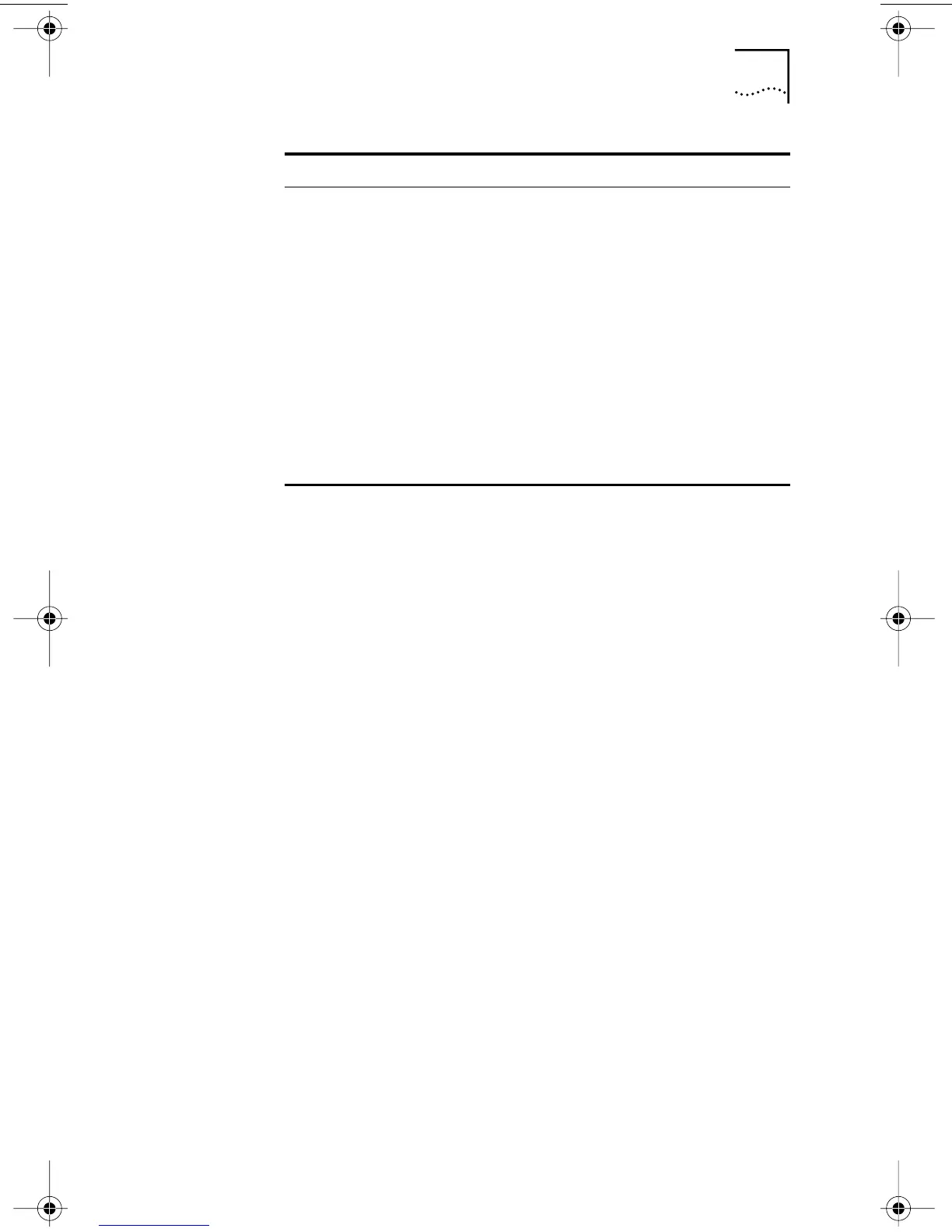Cabling Requirements 83
10BASE-T Operation
10BASE-T is the Institute of Electrical and Electronics
Engineers (IEEE) 802.3 standard for Ethernet signaling
over unshielded twisted-pair wire at 10 Mbps.
Ethernet, as the most widely used network protocol,
uses 10BASE-T as its primary cabling scheme. Ethernet
characteristics include:
■ A data rate of 10 Mbps.
■ A broadcast architecture.
■ A specific media-access control (MAC) scheme.
The 10BASE-T name indicates a signaling speed of
10 Mbps and twisted-pair wiring. Base stands for
baseband, which denotes a technique for transmitting
signals as direct-current pulses rather than modulating
them onto separate carrier frequencies.
A wiring topology using 10BASE-T specifies a wiring
hub, cable arranged in a star configuration, and unshielded
twisted-pair cable. Each node has a separate cable run that
must not exceed 100 meters (328 ft) from the node to
the hub.
Category Use
1 Traditional telephone cable.
2 Data transmissions up to 4 MHz.
3 Voice and data transmission up to 25 MHz. The cable
typically has four pairs of wires. Category 3 is the
most common type of installed cable found in older
corporate wiring schemes.
4 Voice and data transmission up to 33 MHz. The cable
normally has four pairs of wire. This grade of UTP is
not common.
5 Voice and data transmission up to 125 MHz. The cable
normally has four pairs of copper wire and three twists
per foot. Category 5 UTP is the most popular cable
used in new installations today.
book Page 83 Thursday, July 29, 1999 12:23 PM

